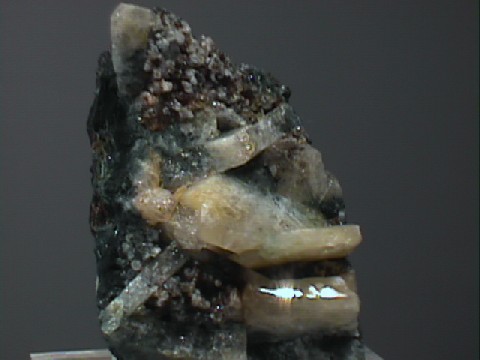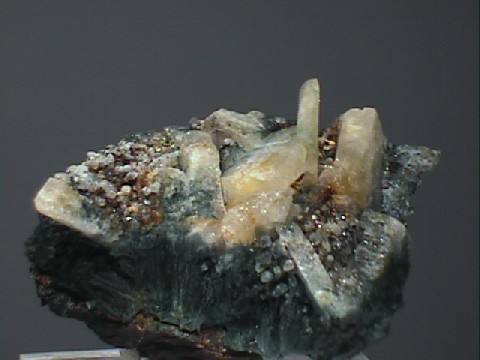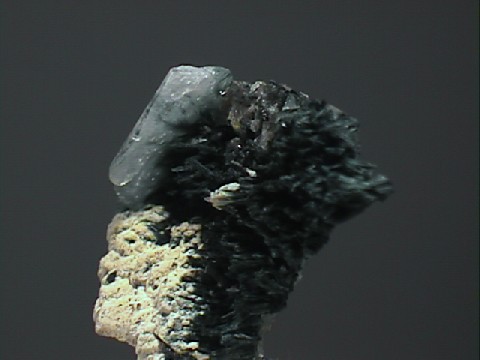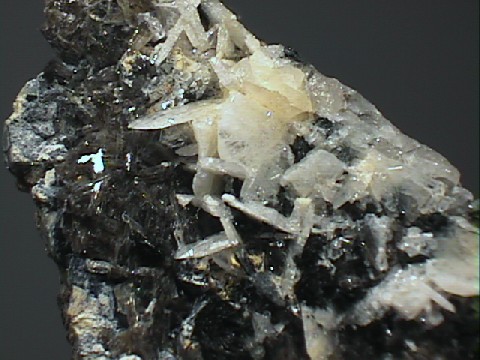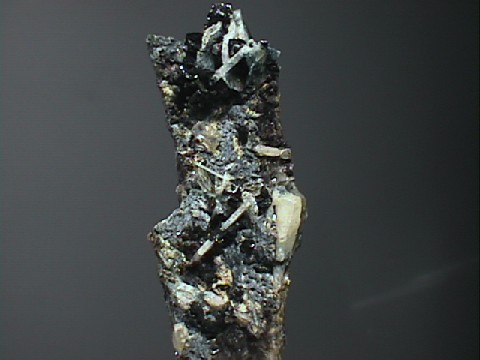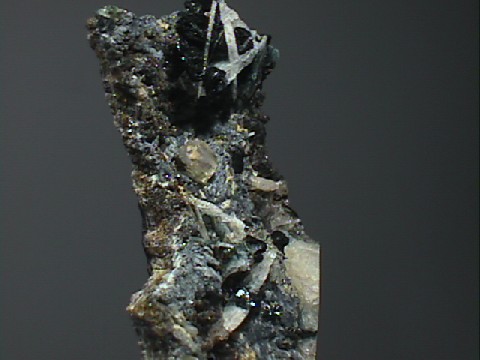 THE MINERAL WHITLOCKITE
THE MINERAL WHITLOCKITE
- Chemistry: Ca9(Mg, Fe)(PO4)6PO3OH, Calcium Magnesium Iron Phosphate Hydroxide.
- Class: Phosphates
- Uses: Only as mineral specimens.
- Specimens
Whitlockite is a rare phosphate mineral.
It was first discovered at the famous phosphate locality - the Palermo Mine, North Groton, Grafton Co., New Hampshire.
It can form small, but distinct and well formed crystals.
PHYSICAL CHARACTERISTICS:
- Color is gray, yellowish, white or colorless.
- Luster is vitreous.
- Transparency: specimens are transparent to translucent.
- Crystal System: is trigonal; 3 m
- Crystal Habits include rhombohedral and tabular crystals.
- Cleavage is absent.
- Fracture is uneven.
- Hardness is 5.
- Specific Gravity is approximately 3.1 (average for translucent minerals)
- Streak is white.
- Associated Minerals include
calcite,
montgomeryite,
mitridatite,
luecophosphite and other phosphate minerals.
- Notable Occurrences include the type locality of Palermo Mine, North Groton, Grafton Co., New Hampshire, USA as well as
Rapid Springs, Yukon, Canada; Spring Creek mine, Flinders Range, Australia and the Tip Top Pegmatite, Custer Co., South Dakota, USA.
- Best Field Indicators: crystal habit, hardness, color and localities.
 THE MINERAL WHITLOCKITE
THE MINERAL WHITLOCKITE
